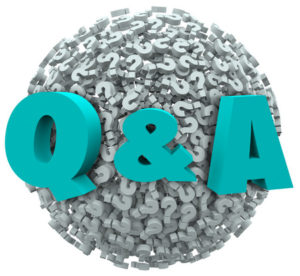 Managing Q&A effectively requires you to have a good offensive game strategy. What this means is being mentally ready with an approach for how you want to field and answer questions no matter what you get asked.
Managing Q&A effectively requires you to have a good offensive game strategy. What this means is being mentally ready with an approach for how you want to field and answer questions no matter what you get asked.
Three things are important to keep in mind before we get into Q&A game strategy:
- Q&A is quite possibly your only guaranteed opportunity to know you are answering your audience’s WIIFM (what’s-in-it-for-me) needs, so embrace it!
- You want to field as many questions as you can, from as many audience members as you can, so keep your answers concise.
- It is TOTALLY OKAY not to know an answer, just say so and then offer to find the answer and get back to the person asking.
Your 5-point offensive game strategy:
1. Pause for one or two seconds after the question is asked to collect your thoughts so you can execute on points 2-5 below.
2. Ask yourself, was that a question or a speech? Speeches may not require more than an acknowledgment. If it’s a combination of a speech followed by a question, your best tack is to just answer the question.
3. Don’t focus on the words used in the question, instead search for the theme of the question. In other words, don’t be baited by and then respond to negative language. Listen for the bigger picture theme of the question, it’s a much better springboard to an answer.
4. Find one of your message points that aligns with the theme and begin your answer with a message point. Message points are great springboards, they set context so you can provide meaningful information in your responses.
5. Bridge or redirect, if necessary, back to one of your message points or to your topic. Bridging isn’t evading, it’s getting back on topic.
Q&A can be tricky and it’s always an unknown, but look at it as a triple-bonus – it’s when you get to connect most directly with your audience, it’s when you get to weave in material you might have mistakenly omitted during your presentation, and it’s when you get to reinforce your key points.
- New Agey Advice for Nervousness - November 3, 2022
- Your Passion Can Go a Long Way Toward Building Connection - October 10, 2022
- Keep stage fright a private matter while you’re speaking on a public stage! - August 11, 2022



